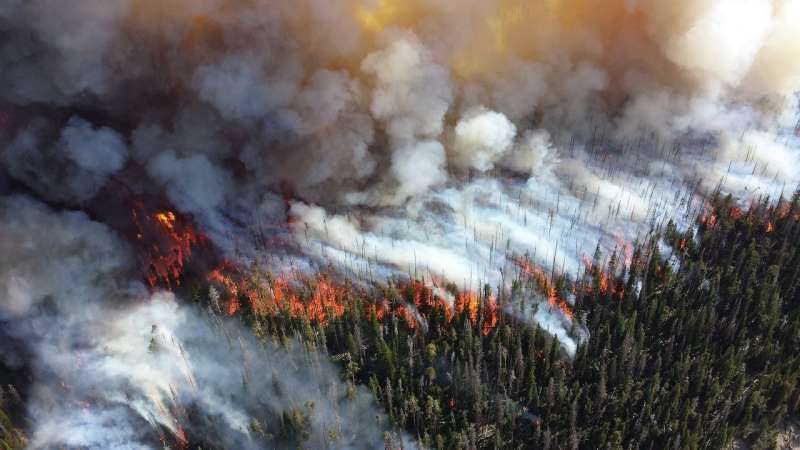Credit: CC0 Public Domain
New pan-European research has found that proactive land management with agroforestry—mixing livestock and trees—reduces the risk of wildfires occurring in European Mediterranean areas.
Studying ten years' worth of data, the research team analysed the relationship between fire incidences and different land uses (agroforestry, forests, shrublands and grasslands). Agroforestry, occupying 12 percent of the land area, was associated with just 6 percent of the fires whereas shrubland, occupying 16 percent of the area, suffered from 41 percent of the fires.
Agroforestry reduces wildfire risk and brings other benefits
Dr. Paul Burgess, Reader in Crop Ecology and Management at Cranfield University, said: "Areas of shrubland were at particular risk of wildfire—where the land is not proactively managed or used, there is a build-up of dry vegetation and shrubs creating fuel. Agroforestry is shown to reduce wildfire risk by encouraging rural employment and removing part of the dry ground-level vegetation through livestock grazing. Taking into account the effect of climate change in this region, it is a land management option that can successfully reduce fires, protect the environment and improve human well-being."
Combining livestock and trees on agroforestry land can create biodiverse habitats that provide an annual income for farmers through livestock products. In comparison to using machinery for clearing vegetation, agroforestry uses less machinery and fossil fuel.
Multiple factors make Mediterranean vulnerable to wildfires
The proportion of burnt land over 10 years ranged from 0.1 percent of the area of France, to 1-2 percent of the area of Greece, Cyprus, Italy and Spain, to 14 percent of the area of Portugal. Uncontrolled wildfires threaten natural vegetation, biodiversity, communities and economies and they release large amounts of carbon dioxide, contributing to global temperature increase.
Land abandonment is an important element in the risk of wildfires. In many parts of the Mediterranean, an aging population and the abandonment of traditional farming and forestry activity has led to extensive unmanaged lands. The result is an increase in flammable biomass (fuel) in shrublands that can be easily ignited by natural events such as thunderstorms, or by human activity.
The paper, "Agroforestry as a sustainable land use option to reduce wildfires risk in European Mediterranean areas," was published by Agroforestry Systems.
More information: Christos Damianidis et al. Agroforestry as a sustainable land use option to reduce wildfires risk in European Mediterranean areas, Agroforestry Systems (2020). DOI: 10.1007/s10457-020-00482-w
Provided by Cranfield University























